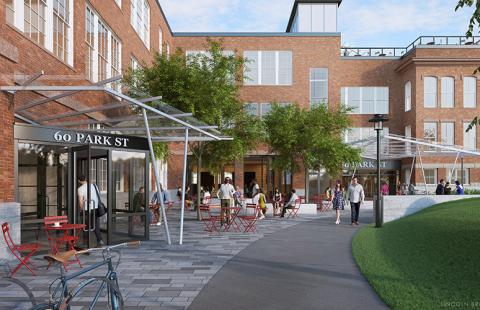What were the specific goals of this creative economy project? Describe the community development challenge or opportunity that your project was designed to address:
We conceived of the Black River Innovation Campus (BRIC) as a strategy for reinventing Springfield as the innovation center it once was by catalyzing its transformation to a digital economy. BRIC will leverage Springfield’s fastest internet speeds in the country (10 gigabit) to educate and train people in digital skills, employ them in digital economy jobs, and empower them to launch the startups that will continue to drive Springfield’s digital economy.
BRIC has three areas of focus:
1. To employ digital workers in a state of the art digital live/work space;
2. To develop an entrepreneurship center that will drive the creation of new technology businesses; and
3. To work with the Springfield School District and other local organizations to implement a full-spectrum of computer science, robotics, and computational thinking programs for children, and to concurrently provide digital training to adults.
If the goals change over time, please describe how:
Our core goals haven’t changed, but like any new venture, we are adapting as the project progresses. We’ve engaged Dartmouth College and Vermont Public Television to collaborate on theater space and are working to leverage 10 gigabit connectivity through VTel to provide an innovation space for new forms of film and multi-media. We know that the 10 gigabit connectivity will be very attractive for organizations and individuals working in the film industry because it makes it possible to move 4k film, edit remotely, and move massive files in real time. The fastest in the nation internet connectivity also facilitates collaboration between virtual reality and augmented reality as well as film collaboration. We continue to seek out partners that would leverage that resource and join BRIC to create jobs and opportunities in Springfield.
Who was involved in this project and what did they do? (be sure to include the partners from outside of the creative sector and how local voices were included):
BRIC is a collaboration between local partners and funders from local, statewide, and national organizations. The Springfield Regional Development Corporation (SRDC) has led local organizing and helped to create the core organizational infrastructure. BRIC has received funding and support from the Kauffman Foundation, the Siegel Family Endowment, the Vermont Community Foundation, the Vermont Women’s Fund, the McClure Foundation, the Byrne Foundation, the Windham Foundation, and Vermont Telephone Company.
Other members of the entrepreneurial ecosystem, including the Vermont Center for Emerging Technology (VCET), the Vermont Technology Council, and the Dartmouth Entrepreneurial Network have been partners, as have the local school system and Purpose Lab. BRIC’s Board is comprised of a majority of local people, including the entire executive committee, which boasts retired business executives, the director of the chamber of commerce, and the Founder of Black River Produce. Governor Phil Scott has been a vocal supporter and spoke at BRIC’s kickoff event. The State of Vermont has also provided resources.
What projects or places, if any, inspired your approach to this creative economy project?
We were inspired by the work in White River Junction over the last 20 years, where community stakeholders took a similarly distressed railroad town and through collaborative efforts created a vibrant community with loft apartments, diverse restaurants, and more. My experiences in the data center communities on behalf of Google also exposed me to places in similar post-industrial positions and the work they did to reinvent themselves.
